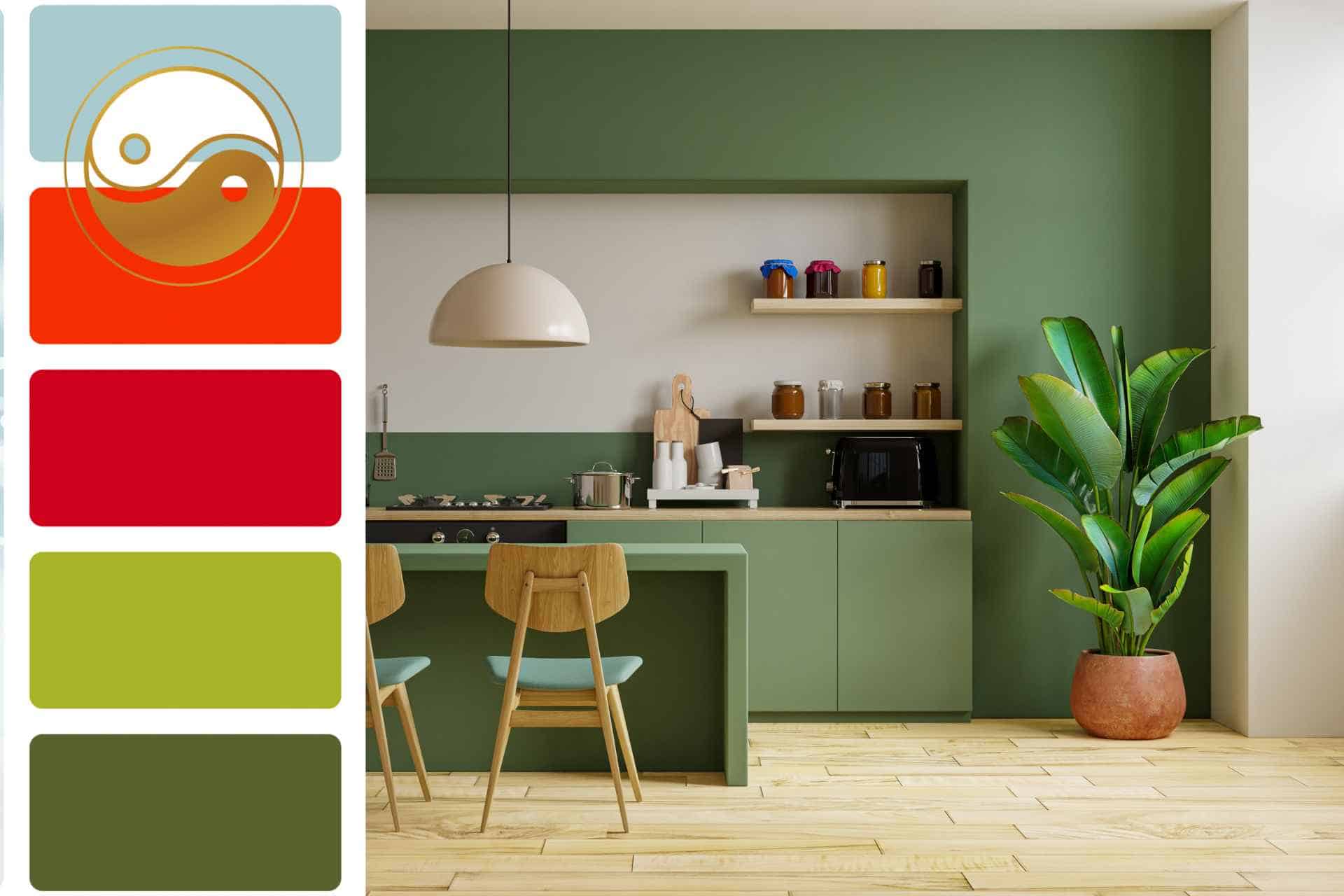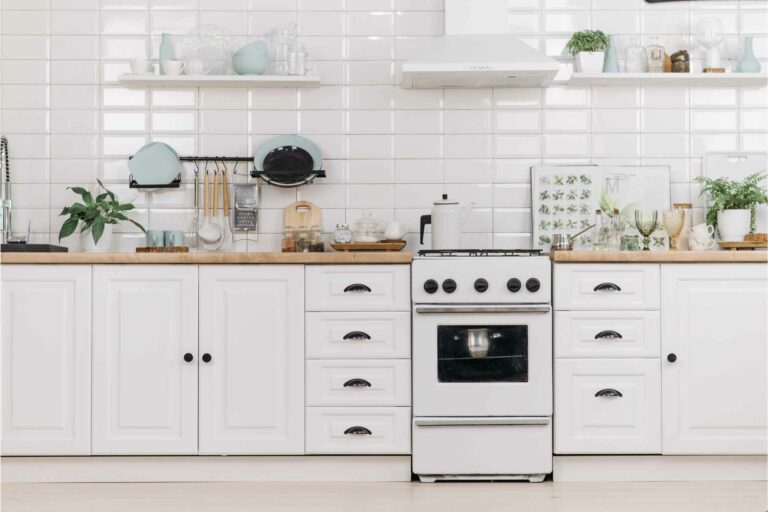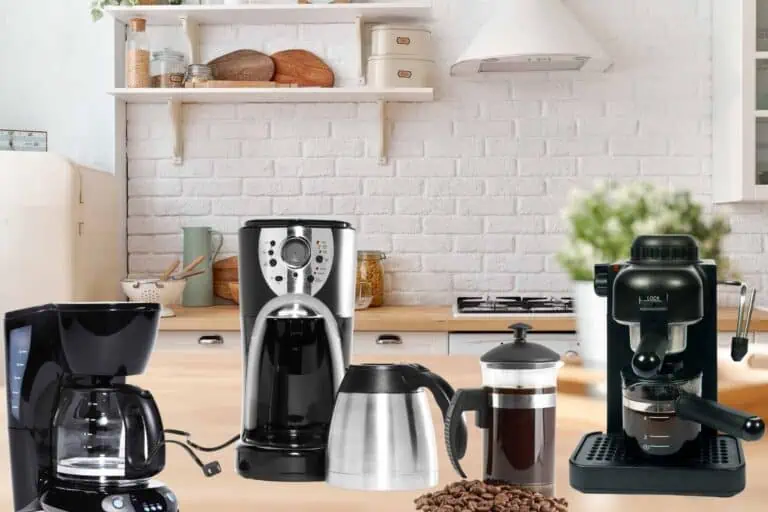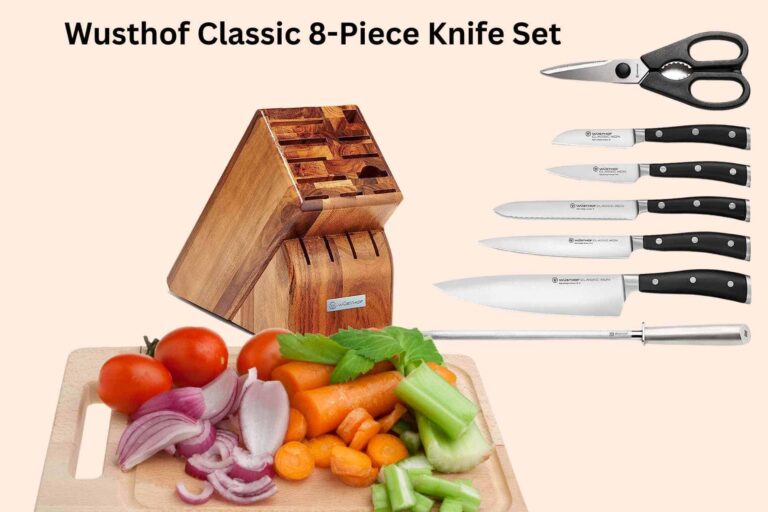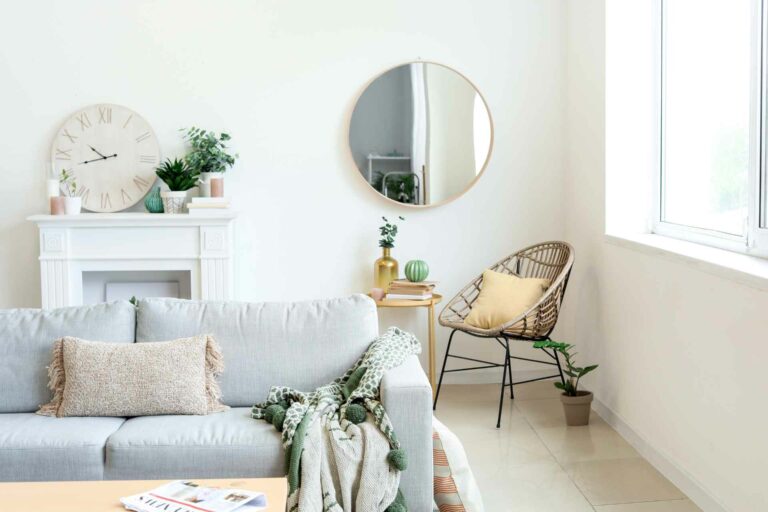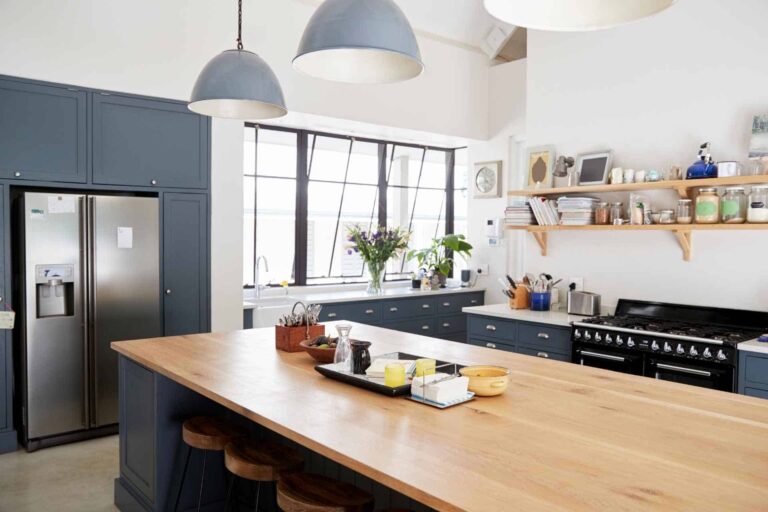Creating Harmony: what is the best feng shui color for a kitchen?
In recent years, the ancient Chinese philosophy of Feng Shui has become increasingly popular in Western cultures. This practice focuses on creating harmony and balance in the environment to promote positive energy flow and improve one’s overall well-being. From home design to personal fashion choices, Feng Shui principles can be applied to various aspects of daily life.
Of particular significance in Feng Shui is the use of color. Each color is associated with a specific element and has its own unique energy, which can greatly impact the atmosphere and mood of a space. So, what is the best feng shui color for a kitchen? This guide delves into the fascinating world of Feng Shui kitchen colors, helping you to create a harmonious culinary space that caters to your personal needs and goals.
Understanding the Role of Kitchen in Feng Shui
In Feng Shui, the kitchen is considered to be one of the three most important areas of a home, alongside the bedroom and bathroom. This is because food is seen as a symbol of wealth and nourishment, making the kitchen an essential space for promoting abundance and prosperity. Additionally, cooking itself is believed to be a form of alchemy, transforming raw ingredients into delicious meals that nourish both the body and soul.
Therefore, it is crucial to ensure that the kitchen is designed and decorated in a way that supports positive energy flow. This includes choosing the right colors for this space, which can greatly enhance its Feng Shui qualities.
Elements and Colors for a Feng Shui Kitchen
In Feng Shui, the five natural elements – Fire, Earth, Metal, Water, and Wood – each correspond to certain colors. Here’s how these elements are related to the kitchen:
Fire – Representing the cooking process, the Fire element can be enhanced with red, strong yellow, orange, pink, or purple. However, an excess of these colors can create a volatile environment, so use them in moderation.
Earth – Symbolizing stability and nourishment, Earth tones like light yellow, beige, and sandy/earthy colors, can create a welcoming, calming kitchen space.
Metal – Associated with sharpness, efficiency, and cleanliness, the Metal element can be emphasized with colors like white and gray. These colors can give your kitchen a sleek and modern feel.
Water – Regarded as a cleansing and purifying element, Water-related colors are black and blue. However, since water can put out fire, these colors are best used sparingly in the kitchen.
Wood – Symbolizing growth and vitality, Wood can be represented with browns and greens. These colors can bring a sense of nature and freshness into your kitchen.
what is the best feng shui color for a kitchen?

Feng Shui Colors and Their Significance
In addition to the five elements, there are also specific colors that have a significant impact on the energy flow in a Feng Shui kitchen. These include:
Green
Green is the color of renewal, freshness, and harmony. In Feng Shui, it is linked with the Wood element and is known to represent growth and vitality. Incorporating shades of green in your kitchen can bring in a natural, soothing vibe, promoting a peaceful and calming environment. However, similar to other colors, it is important to strike a balance and not overuse it.
Yellow
Yellow, the color of sunshine, is associated with cheerfulness, warmth, and mental stimulation. In Feng Shui, it is often linked with the Earth element, symbolizing stability and nourishment. Utilizing shades of yellow in your kitchen can evoke feelings of happiness and comfort, stimulating conversation and interaction. Its energizing nature can also stimulate appetite, making it a perfect color choice for kitchens. But remember, as with any other color, it’s important to use yellow in moderation to maintain a balanced energy flow.
White
White is a color often associated with purity, cleanliness, and tranquility. In the realm of Feng Shui, it is connected with the Metal element, symbolizing clarity and preciseness. Incorporating shades of white in your kitchen can create a sense of cleanliness and order, reflecting light to brighten the overall ambiance. It acts as a blank canvas, giving other colors in the room a chance to stand out. Despite its starkness, when used properly, white can bring about a serene and peaceful atmosphere. Be mindful, though, to complement it with warm hues to prevent the space from coming off as too cold or sterile.
Red
Red is a powerful color, strongly associated with passion, warmth, and vitality. In the context of Feng Shui, it is linked with the Fire element, symbolizing dynamism and high energy. Incorporating shades of red in your kitchen can stimulate the senses and evoke feelings of coziness and warmth. It’s known to stimulate the appetite, making it an excellent choice for dining areas. However, due to its intensity, it should be used judiciously to prevent overwhelming the space. Accent pieces in red or a single red wall can provide the right hint of energy without being overpowering.
Blue
Blue is a color that’s synonymous with tranquility, calmness, and intellectualism. In the principles of Feng Shui, it’s associated with the Water element, signifying wisdom, calmness, and insight. Utilizing hues of blue in your kitchen can establish a sense of serenity and relaxation, providing a peaceful environment for thoughtful conversation and mindful cooking. Shades of blue are also believed to suppress the appetite – a fact to consider if you’re trying to promote healthier eating habits. However, it’s essential to balance blue with warmer tones to prevent the space from feeling too cool or impersonal.
Orange
Orange, a blend of red and yellow, embodies the energy of the former and the cheerfulness of the latter, making it a vibrant and uplifting color. In Feng Shui, orange is linked to the Earth element, symbolizing stability and nurturing warmth. Incorporating orange in your kitchen can foster a friendly, lively atmosphere, making it an inviting place for gatherings and social bonding. It is known to stimulate the appetite, making it a great choice for dining spaces. However, its vivacious nature means it should be used wisely. Consider using orange in moderation, perhaps through accent pieces or a feature wall, to avoid overwhelming the space with too much intensity.
Purple
Purple, a unique blend of the calm stability of blue and the fierce energy of red, often symbolizes luxury, power, and ambition. In Feng Shui, it’s related to the Fire element, symbolizing passion, enthusiasm, and high energy. Applying shades of purple in your kitchen can infuse the space with a touch of sophistication and luxury. It’s also said to encourage creativity and imaginative thinking, making it an excellent choice for those who love to experiment with their cooking. However, due to its dramatic and intense nature, it’s recommended to use purple in moderation, perhaps in accent pieces or a feature wall, to prevent the space from feeling too overwhelming or heavy.
Gray
Gray is a timeless, practical, and flexible color that represents neutrality and balance. In Feng Shui, gray is classified under the Metal element, which is linked to clarity, preciseness, and sophistication. Utilizing gray in your kitchen can create a sleek, modern ambiance and provide the perfect backdrop for other colors and elements to shine. It’s a color that can match almost any other, giving you a lot of freedom and flexibility in decorating. However, it’s important to balance gray with warmer or brighter colors to avoid the space from feeling too sterile or dull. Through thoughtful use, gray can lend a sense of elegance and calm to your kitchen, making it a serene space to cook and dine.
Pink
Pink, a delicate color that represents compassion and nurturing, is often associated with warmth, care, and inner peace. In Feng Shui, it’s related to the Fire element, symbolizing love, joy, and the bond between loved ones. Utilizing pink in your kitchen can bring about a soothing atmosphere, promoting relaxation and contentment. It’s a color that can uplift spirits and imbue your cooking and dining space with positive energy. The recommended use of pink is in smaller sections or accessories to give the kitchen a subtle hint of warmth and love, without overwhelming the overall decor. When balanced well, pink can add an inviting and harmonious feel to your kitchen space.
Brown
Brown, an earthy tone, represents stability, reliability, and resilience. In Feng Shui, it’s connected to the Earth element, symbolizing grounding, nourishment, and support. Using brown in your kitchen can invoke feelings of warmth and comfort, simulating the sense of being in nature. It’s a color that resonates with solid wooden furniture, rustic decorations, and earth-toned accents, making it ideal for creating a cozy, rustic, or traditional kitchen ambiance. However, to prevent the space from becoming too dark or heavy, it’s suggested to pair brown with lighter or vibrant colors and ensure adequate lighting. Calculated use of brown can result in a kitchen that is not only visually appealing but also exudes a feeling of reliability and wholesomeness.
Choosing the Right Color for Your Kitchen

When designing or redecorating your kitchen, it’s essential to choose the right color scheme that not only suits your personal taste but also creates a harmonious and balanced atmosphere. While there are various colors to choose from, each one holds unique symbolism and energy in Feng Shui. By understanding the meaning behind different colors, you can create a kitchen space that promotes positivity, balance, and well-being.
Some general tips to keep in mind when choosing colors for your kitchen are:
- Consider the size of your kitchen: If you have a small space, it’s best to use light or neutral colors to create an illusion of more significant space. Darker colors tend to make rooms appear smaller.
- Think about the natural lighting: The amount of natural light in your kitchen can impact how colors appear. If you have a lot of natural light, darker colors may work well, but if the space is lacking in natural light, it’s best to stick with lighter shades.
- Use color combinations: Mixing and matching colors can create a dynamic and visually appealing kitchen. Consider using complementary or analogous colors for a cohesive look.
- Pay attention to the color’s symbolism: Colors have different meanings and energies in Feng Shui. It’s essential to choose colors that align with your intentions for your kitchen space.
Implementing Feng Shui Color in Kitchen Design
Incorporating Feng Shui colors into your kitchen design revolves around understanding the unique energy each color holds and matching it with your kitchen’s intended purpose. For instance, white symbolizes cleanliness and purity in Feng Shui, making it an excellent choice for kitchens as it promotes a clean and fresh environment. Earth tones like beige, brown, and yellow foster stability and nourishment, reflecting the kitchen’s role as the home’s heart. Red, a color representing prosperity and luck, can be used sparingly as an accent color to stimulate appetite and energy. Remember, it’s all about creating balance. Use colors that complement each other and align with your desired energy flow. Always consider the overall aesthetic of your home to ensure your kitchen doesn’t clash but instead flows harmoniously with the rest of your living space.
Conclusion: The Best Feng Shui Color for Your Kitchen
In Feng Shui, there’s no one-size-fits-all answer to the best color for a kitchen. The ideal choice depends on your personal energy, the kitchen’s direction, and the amount of natural light the room gets. White, being the color of cleanliness and purity, is often a safe choice for creating a clean and fresh environment. Earthy tones such as beige, brown, and yellow provide stability and nourishment, reflecting the kitchen’s role as the home’s nourishing center. If you’re looking to add a touch of prosperity and luck, consider using red sparingly as an accent color. The key is to strike a balance and ensure that your chosen colors harmoniously blend with the rest of your home’s aesthetic. Ultimately, the best Feng Shui color for your kitchen is the one that aligns with your intentions and enhances the overall energy flow in your space.

